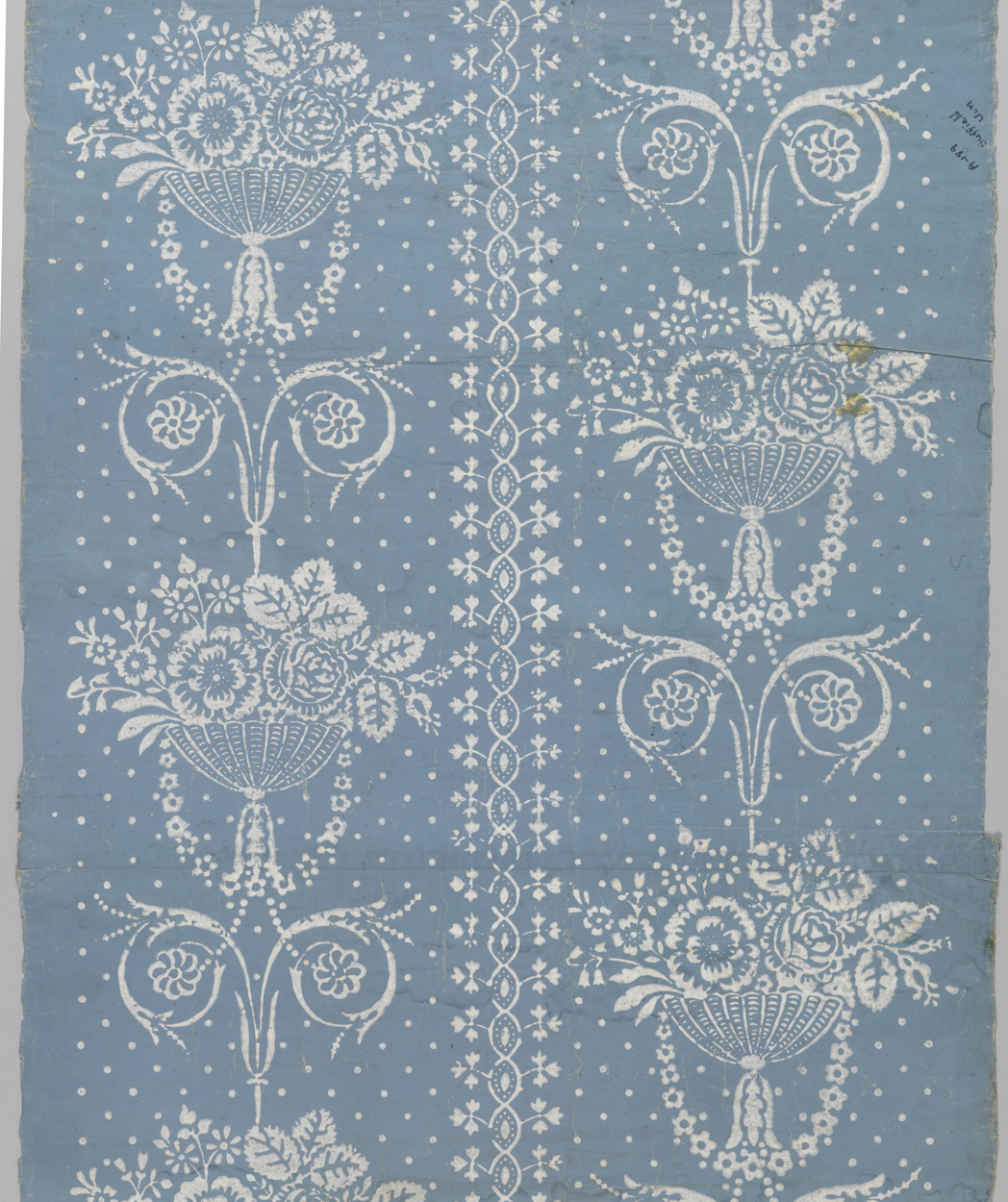Pretty and pleasant, this unassuming wallpaper plays an important role in the scholarship of early American design. In 1821 Adrian Janes and Edwin Bolles opened a wallpaper business (creatively named Janes & Bolles) in the bustling industry town of Hartford Connecticut. In the American Mercury, June 1st 1824, they advertised they had an “extensive assortment of PAPER-HANGINGS and BORDERS” and as being “desirous of selling every piece they have in their store, and as many more as they can manufacture. Despite their straightforward and enthusiastic advertisements the company was dissolved in 1828, a mere seven years after it was started.
While their company’s success may have been short-lived, Janes and Bolles have never-the-less secured their names in wallpaper history. These two gentlemen of Connecticut hold the distinction of producing the earliest known American wallpaper sample book that has survived to the present day. The book currently resides in the collections of Old Sturbridge Village in Massachusetts, and the afore mentioned paper with patterns of lace-like festoons on a powder-blue background is represented within its pages. The papers contained in the Janes and Bolles book have allowed scholars the rare opportunity to ascribe a finite date and locale of manufacture to wallcoverings that would have otherwise remained a mystery.
Anna Rasche is a student in the History of Decorative Arts & Design graduate Program at the Cooper Hewitt, and is a Master’s Fellow in the Wallcoverings Department
